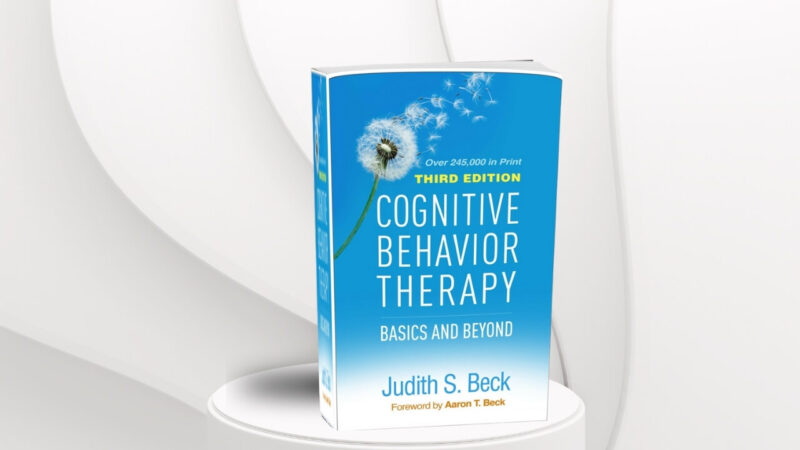I often encounter clients seeking effective strategies for managing stress. Cognitive-behavioral therapy (CBT), a highly regarded therapeutic approach, offers numerous techniques that are not only beneficial within the confines of therapy sessions but are also immensely applicable in everyday situations. In this post, I will share insights on employing CBT techniques for stress management. Let’s begin.
The Foundations of CBT
It has proven effective in treating a range of mental health issues such as anxiety, depression, PTSD, and beyond.
The core principle of CBT involves identifying and modifying dysfunctional thinking patterns to foster better emotional regulation and develop healthier behavioral responses.
According to Kristina Fenn, (CBT) examines the interplay among thoughts, feelings, and actions. It employs a prescriptive, brief, and organized method to address numerous psychological conditions. Its goal is to reduce suffering by guiding individuals to cultivate healthier thought patterns and actions.
Core Techniques

Several CBT techniques have are specifically created to manage stress effectively. Here’s an overview of some of the most impactful ones:
- Behavioral Activation: This technique motivates individuals to engage in activities they find enjoyable or fulfilling, which can significantly uplift their mood and reduce stress levels.
- Diaphragmatic Breathing: Also known as deep breathing, this method encourages breathing from the diaphragm rather than the chest, which helps calm the nervous system and decrease anxiety.
- Progressive Muscle Relaxation: This involves sequentially tensing and then relaxing different muscle groups, which enhances bodily awareness and relaxation.
- Self-monitoring: A key strategy where individuals learn to track and record their stress triggers and responses, gaining insight into their habitual patterns.
- Goal Setting and Management: Effective goal setting can help individuals approach their objectives without feeling overwhelmed, thereby managing stress more effectively.
Cognitive Strategies in CBT
Cognitive Restructuring
This involves identifying and challenging negative thought patterns, transforming them into more balanced and positive outlooks.
As per Courtney E. Ackerman, MA., upon recognizing the misconceptions you possess, you can start to investigate their origins and the reasons behind your acceptance of them. The moment you pinpoint a belief that is detrimental or damaging, you can initiate the process of contesting it.
Guided Discovery
Through this technique, therapists help clients explore and reassess their assumptions and beliefs about stress-inducing situations. James C Ovelhoser’s study states that guided discovery includes a therapeutic conversation created to help clients uncover personal resolutions to their issues.
Merging problem-solving therapy with the Socratic technique aids clients in cultivating their own strategies for coping.
Mindfulness-Based Cognitive Therapy (MBCT)

MBCT integrates mindfulness practices with cognitive techniques, fostering a state of awareness and presence that can mitigate the intensity of stress. As J. Mark G. Williams states, MBCT combines elements of cognitive-behavioral therapy for depression with the practices of the mindfulness-based stress reduction (MBSR) program.
Implementing CBT Techniques in Daily Life

Adopting CBT techniques for stress management doesn’t necessarily require ongoing therapy sessions. Anyone who is interested in these strategies can start by utilizing several resources:
- Books and Online Courses: A variety of educational materials are available that can guide individuals through the basics of CBT. My personal recommendation is [CBT] Cognitive Behavior Therapy, Third Edition: Basics and Beyond, by Judith S. Beck and Aaron T. Beck
- Practical Exercises: Engaging in activities such as journaling, relaxation methods, and behavioral experiments can be initiated independently to manage stress.
- Homework Assignments: These are practical tasks that reinforce the learning and application of CBT strategies between therapy sessions.
It is advisable to consult with a healthcare provider before initiating any therapeutic program, especially to tailor the approach to individual needs and contexts.
Choosing the Right Therapist

For those considering professional guidance to implement CBT, selecting the right therapist is crucial. Factors to consider include:
- Certification and Experience: Ensure the therapist has a solid background and certification in CBT.
- Therapeutic Alliance: It’s important to have a therapist with whom one feels comfortable and understood, as this significantly impacts the effectiveness of the treatment.
- Session Format and Duration: Clarify how the sessions will be structured and the expected duration to ensure it fit personal schedules and goals.
How CBT for Stress Management Can Benefit You
With CBT, you’ll learn practical things you can start doing right away instead of just talking about your problems. This means you usually start feeling better faster than with some other types of therapy.
One of the big parts of CBT is noticing when you have negative thoughts that make your stress worse and learning to think about things in a more positive way instead. You’ll also practice relaxing activities and things you enjoy to feel less stressed. Before you know it, you’ll get really good at handling stress in your everyday life.

